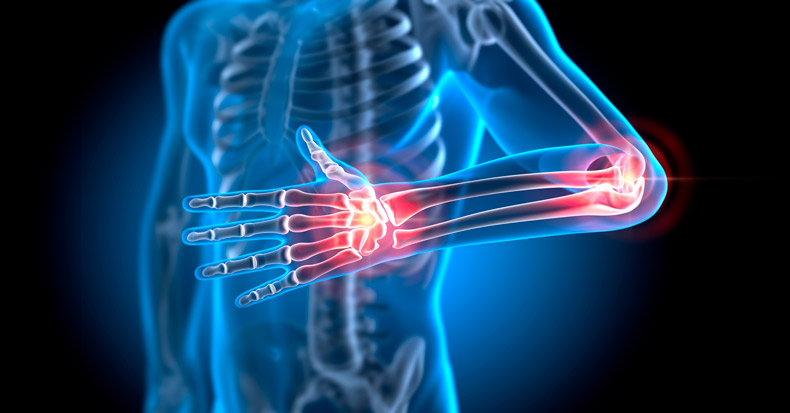Because of the close anatomical relationship between the wrist and elbow, it’s not uncommon for patients to present for care with symptoms that affect both regions. In some cases, they may have two distinct musculoskeletal conditions that need simultaneous treatment. But in other cases, the pain in one area may be referred by a musculoskeletal complaint in the other. Let’s take a look at some of the most common conditions doctors of chiropractic see when a patient comes in for wrist and/or elbow pain.
Perhaps the most well-known conditions affecting the elbow include lateral and medial epicondylitis (golfer’s and bowler’s elbow, respectively). Pain in the lateral aspect of the elbow most often involves a musculotendinous injury, which includes tennis elbow or lateral epicondylitis, most frequently caused from overuse, often resulting from occupation or sport. Although this is often described as a “self-limiting” condition—meaning it’s likely to resolve on its own—there is a high recurrence rate, and it is often associated with an extended sick leave and disability that requires professional management.
On the medial side of the elbow (the side closest to the trunk if you stood with your arms down and palms facing forward), other conditions include ulnar neuritis (cubital tunnel syndrome), ulnar collateral ligament injury (a common baseball pitcher injury), flexor pronator strain (often from overuse of hand tools), and snapping medial triceps.
Like the elbow, the wrist can be divided into various anatomical regions such as the medial and lateral side as well as the anterior (palm side) and posterior wrist. The most common condition associated with the wrist is carpal tunnel syndrome, which is often described as pins and needles or tingling in the fingers excluding the pinky and ring finger caused by restriction of the median nerve at the wrist. Additionally, there is ulnar tunnel syndrome, which manifests as symptoms in the pinky and pinky side of the ring finger. The radial nerve also passes through the wrist, and when this nerve becomes entrapped, the patient may experience symptoms on the back of the hand.
Outside of emergency circumstances, these various conditions can often be managed through a multimodal approach by a doctor of chiropractic that includes manual therapies, specific exercises, orthoses/braces, activity modifications, and physiotherapy modalities. Unfortunately, as these conditions have a tendency to gradually worsen over time, patients often wait until their symptoms become severe enough that carrying out normal work and life activities becomes difficult. While conservative care may still yield satisfactory results for the patient, a longer course of treatment may be necessary. If the condition does not fully respond to this approach, then referral to an allied healthcare provider may be needed for more invasive treatments such as injections or even surgery.



